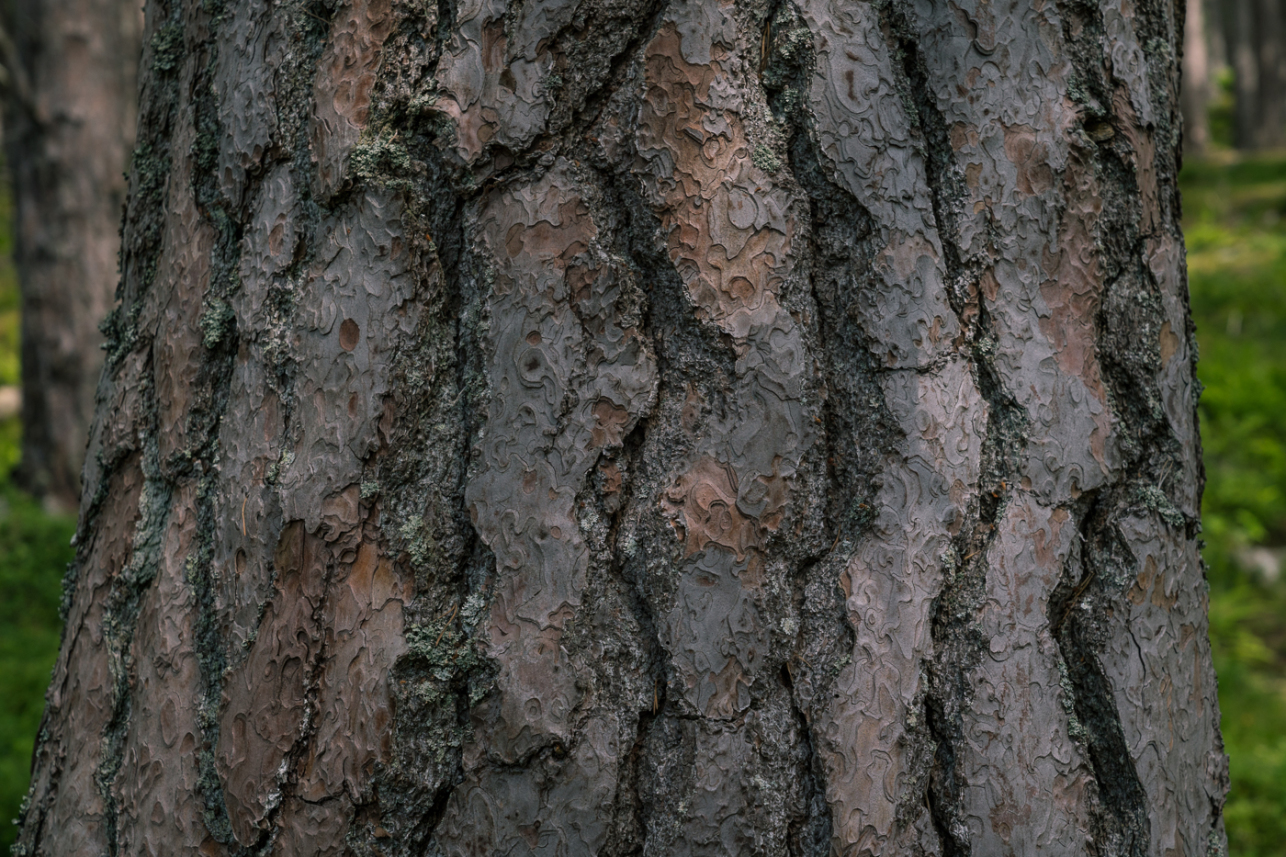#JohnMuirDay 2022: Championing wild places
On the eve of John Muir’s 184th Birthday, the Trust’s senior policy officer Rosie Simpson reflects on how the Trust is carrying on the Scots-born American conservationist’s work to campaign for the protection of wild places.
Our inspiration - John Muir - was an active campaigner against inappropriate development and an advocate for the wild. To help celebrate John Muir Day 2022, we share five recent examples that show how we are continuing Muir’s campaigning work by protecting the UK’s wild places.
1. Planning policies and wild places
In December 2021, the Scottish Government published its draft Fourth National Planning Framework (NPF4). Following the draft’s publication, we prepared and submitted a response to the ‘Parliamentary Call for Evidence’ to inform the work of the Parliamentary Committees scrutinising the draft; shared our main points about the draft in a briefing for MSP members of the Rural Affairs and Islands Committee and the Net Zero, Transport and Energy Committee; gave evidence alongside Scottish Environment LINK to the Net Zero, Energy and Transport Committee on the draft policies; and submitted a full response to the Scottish Government public consultation.
In addition to the NPF4 consultation, the Trust has also submitted responses to two related Scottish Government consultations – one on future Open Space Strategies, which Local Authorities have a duty to prepare and publish under the Planning (Scotland) Act 2019, and the other on new Local Development Planning Guidance, which is intended to support the interpretation and implementation of NPF4 policies.
- Read more about our response to NPF4.
2. Proposing a Carbon Emissions Land Tax
Over the past six months the Trust has continued to promote its proposal for a new carbon emissions land tax in Scotland with members of the public, members of the Scottish Parliament and the Council of Local Authorities (COSLA).
In the month of COP26, the Trust presented the proposal in a joint online event with the Scottish Ecological Design Association, to visitors to Dynamic Earth’s climate science festival and at the national conference of the grouse moor reform coalition, REVIVE.
We have met with several MSPs to share and discuss the proposal in detail. In October 2021, Trust staff met East Lothian MSP, Paul McLennan, at Schiehallion. In December 2021, we met online with Scottish Green MSPs, Ariane Burgess and Patrick Harvie. Paul McLennan has since given his public backing to the proposal in an article in the East Lothian Courier.
In early 2022, following advice from the Environment Rights Centre Scotland, we updated the proposal to confirm that the Scottish Government would be able to introduce this new tax using its devolved tax making powers under the Scotland Act 1998. Devolved tax making powers include local taxes, administered by Local Authorities to raise revenue for Local Authority expenditure. What we are proposing would be a local tax, administered by Local Authorities, with funds raised spent in the Local Authority Area. This means it should be within the Scottish Government’s legal competency and tax making powers. In March 2022, the Trust attended the Scottish Green Party conference to share the updated proposal.
- Read more about our proposed Carbon Emissions Land Tax.
3. Meeting with the Scottish Government
Before the Trust submitted its response to the Scottish Government’s draft Onshore Wind Policy Statement in January 2022, we spoke to the Government’s onshore wind policy team about the content of the statement and pressed the point that a spatial strategy for onshore wind expansion needed to come from the fourth National Planning Framework.
- We said part of a planned approach needs to protect wild places and peatlands, as these places are nationally important natural stores of carbon and places to target nature recovery to reverse loss of biodiversity.
- We pointed out that as the share of renewables in the UK energy mix increases, it becomes increasingly less likely that onshore wind farms on peatlands will generate overall carbon savings so developing peatlands could result in long term, irrecoverable carbon losses.
- We asked for maps of carbon soils to be retained in national planning policy guidance to reduce the likelihood of developing healthy peatlands and for the carbon calculator to be updated.
These later points led to another meeting in February 2022 with the onshore wind policy team, Scottish Environment Protection Agency and Professor Jo Smith, from Aberdeen University, who was one of the lead researchers of the original carbon calculator.
The carbon calculator is a web-based tool used by developers of onshore wind to estimate the carbon balance of a wind farm development. Included in the balance is an estimate of the emissions released from disturbance and drainage of peatland caused by construction activity. The Trust and Professor Jo Smith made four points on the different ways the calculator is currently underestimating the values for carbon emissions from disturbed and drained peatland.
We hope the conversation will encourage the Scottish Government to complete a literature review of peatland restoration methods, update policy guidance for onshore wind developers and look at how best to adjust the calculator methodology so estimated emissions from healthy peatland are not being underestimated.
4. Recruiting nature champions
Last year the Trust joined Scottish Environment LINK’s Nature Champions initiative, which matches willing MSPs with environmental organisations to raise awareness and take action for a native species or habitat.
In September 2021, Trust staff met Lorna Slater, champion for golden eagle, at the Moffat golden eagle festival. Unfortunately, in March 2022 Lorna formally resigned her role due to her ministerial portfolio; Lorna is Minster for Green Skills, Circular Economy and Biodiversity and told us she needs to champion all nature rather than a single species. We are however still planning to host Lorna at Nevis during summer 2022 and have commenced a search for a replacement MSP to champion the golden eagle.
We also met Maree Todd, MSP for Caithness, Sutherland and Ross, who agreed to champion the lesser butterfly orchid - a flower whose stronghold is the north-west of Scotland, where it grows in patches on the roadside verges near Quinag. Roadside verge cutting when the orchids are still in flower can reduce the orchid population so we were delighted that Maree took on an immmediate action to write to the Highland Council to propose restricting verge cutting until after the orchids had flowered and dispersed their seed.
In October 2021, Trust staff and John Muir Award delivery partner, Venture Scotland, hosted Anas Sarwar, nature champion for upland birchwoods in a half day of nature discovery at Pollock Country Park in Glasgow.
Alongside nature champions, we have continued to engage with MSPs - mostly through online meetings, but hopefully moving to more face-to-face discussion later this year - wherever their interests, constituency and committee participation overlap with Trust interests.
- Read more about nature champions.
5. Protecting against inappropriate development
Throughout the past six months, the Trust has continued to monitor planning proposals near wild places. In November 2021 we responded to SSEN Transmission’s proposed route and alignment for a replacement overhead line running from Ardmore, north Skye, to Fort Augustus (the ‘Skye Reinforcement project’). We welcomed the proposed plan to underground the cable for a 14km section of the line on the edge of the Cuillins National Scenic Area and held a follow up meeting with SSEN Transmission about the project later in March 2022.
In January 2022 we objected to the proposed plans to expand the fish farm in Loch Hourn. Close to the Trust’s Knoydart property, the fish farm is sited in a remote, wild place and sensitive water environment that is of high conservation value to wild salmon populations at a time when the species is in overall decline. Expansion plans did not seem justified on the basis of evidence provided and it was not clear that the risks to wild salmon would be managed.
In March 2022, we welcomed the decision of Scottish Ministers to refuse planning permission for Glenshero wind farm, a 39-turbine development which would have been sited on the edge of the Monadhliath mountains, close to the Stronelairg development. This decision demonstrates that existing wind farms are not a justification to developing nearby wild places and that reaching net zero requires thinking carefully about the right renewables in the right place.
- Read more about our casework

